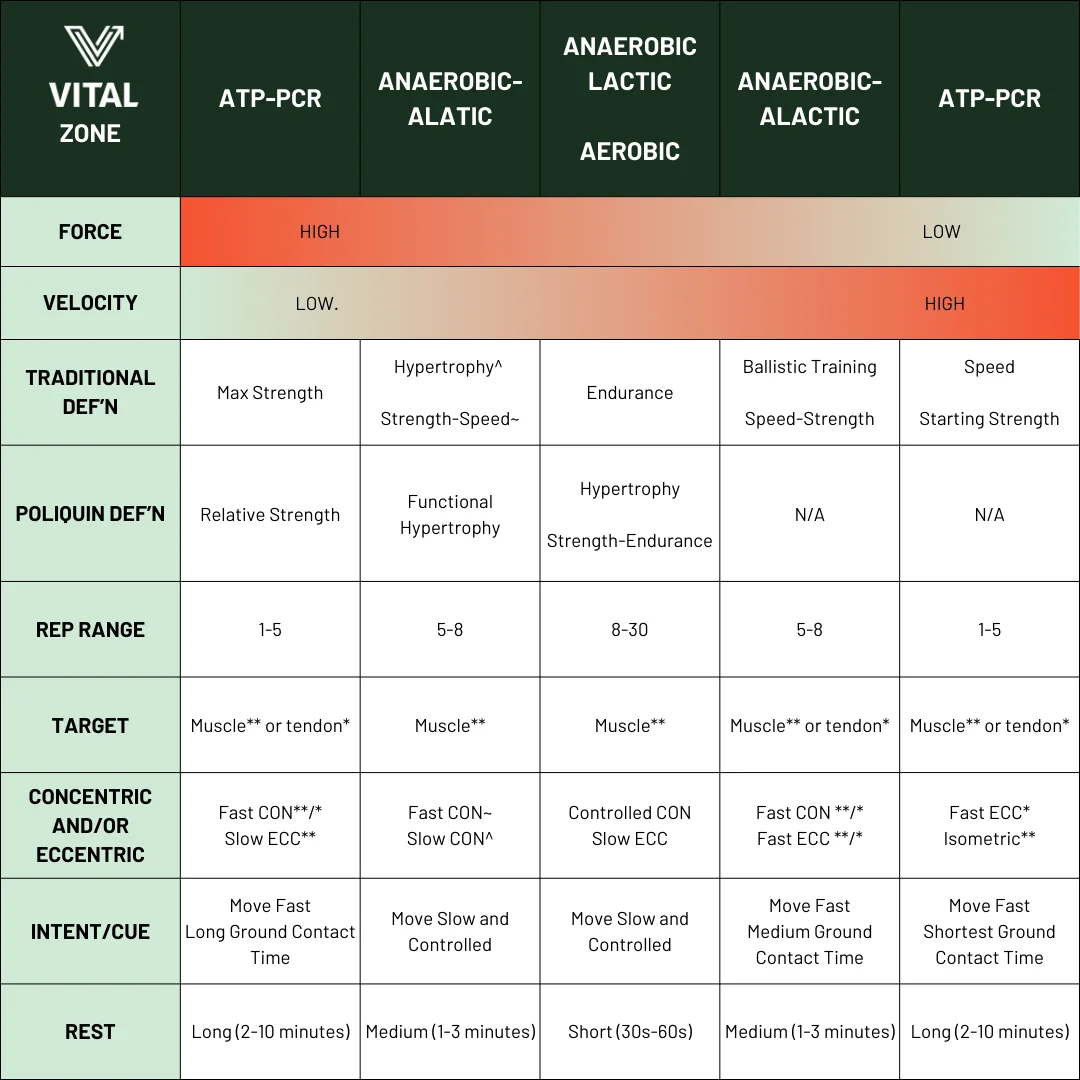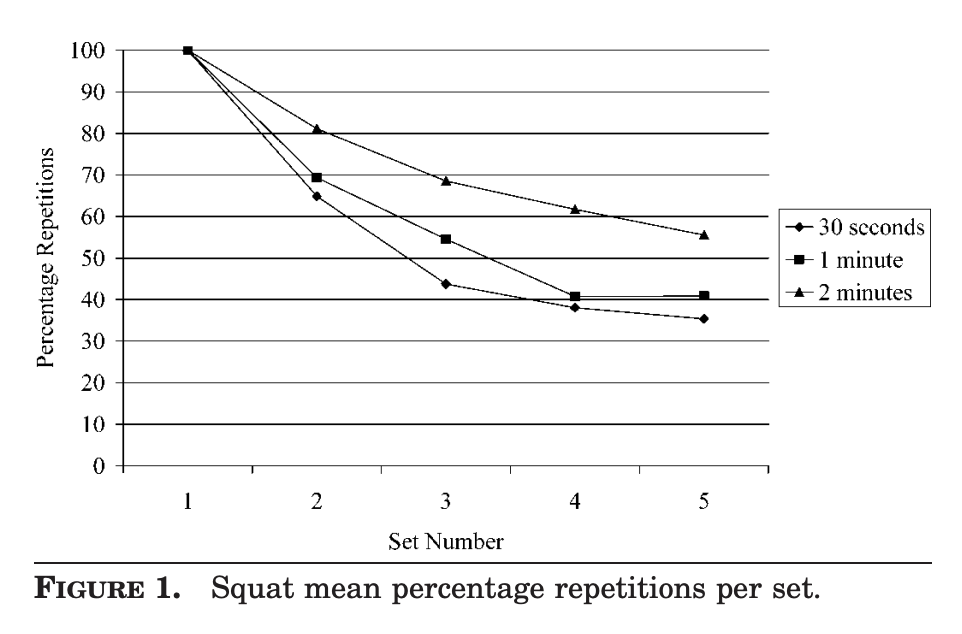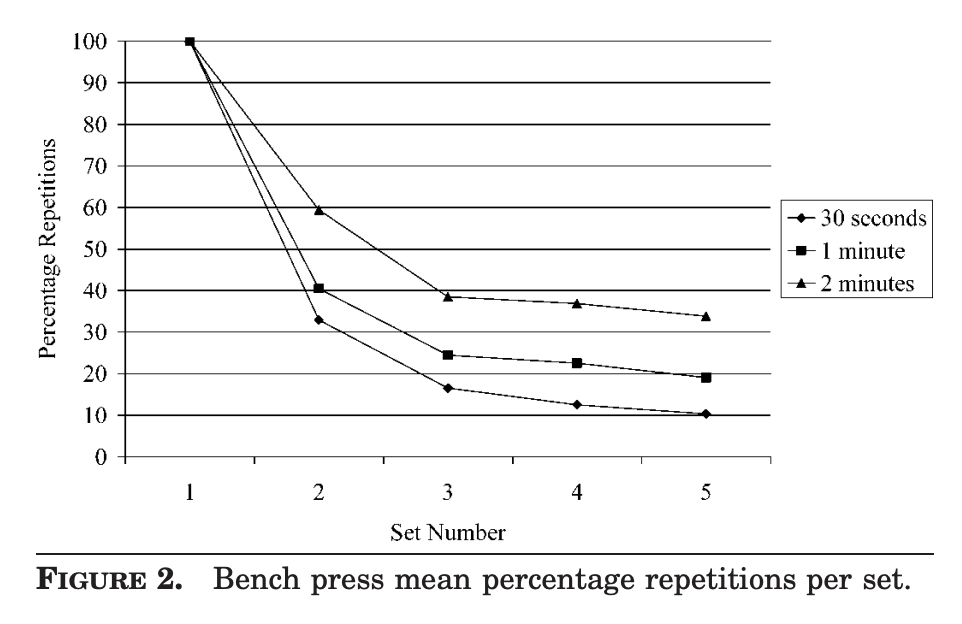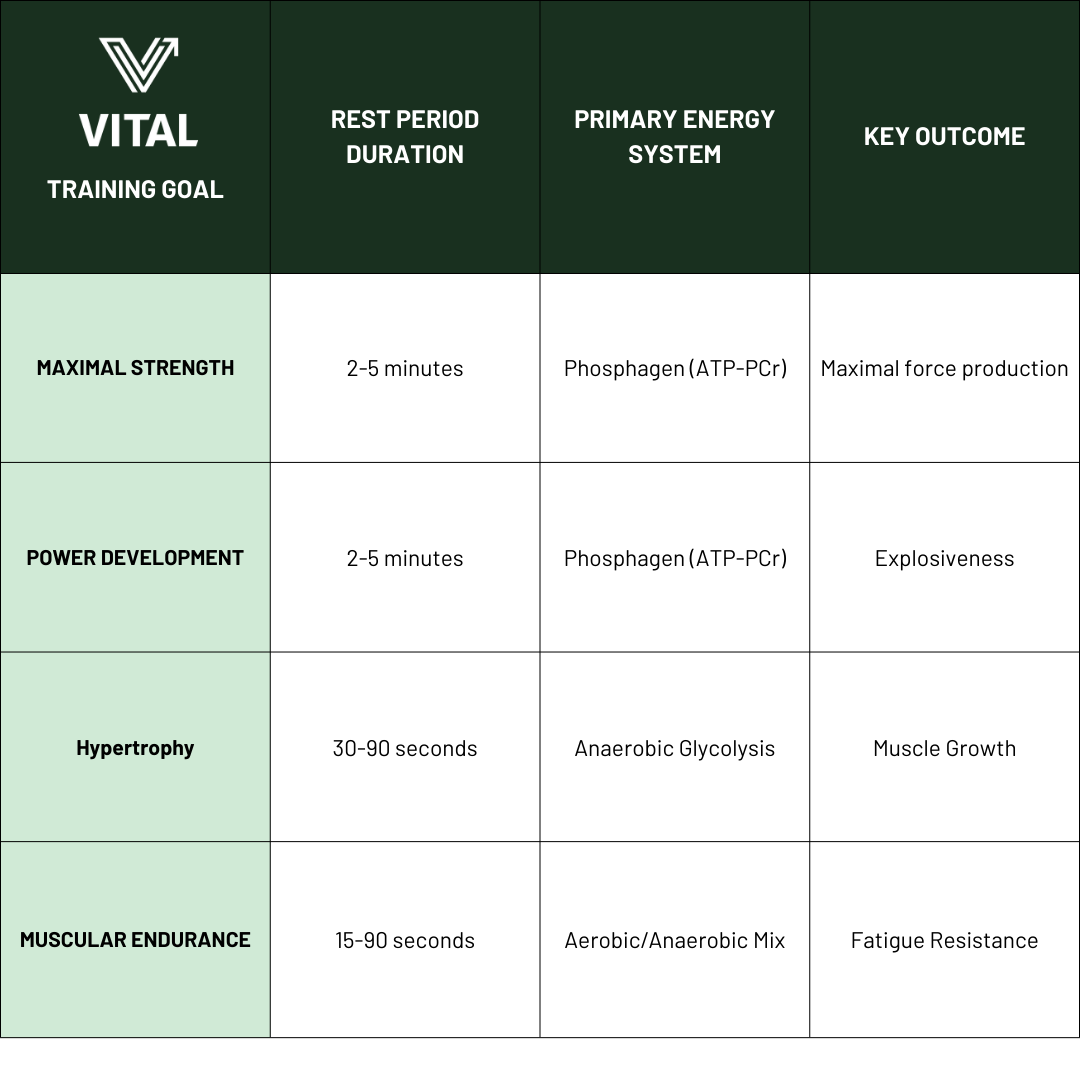Resting Between Sets: How to Optimize Your Rest Periods During Training
When we think about strength training, our minds often focus on sets, reps, and load. But what about the time we spend resting between those sets? Rest intervals are more than just a break—they are a critical component in driving performance and maximizing your results.
Whether your goal is developing maximal strength and power, achieving muscle growth (hypertrophy), or improving muscular endurance, understanding rest periods can transform your training outcomes. In this blog, follow along as we break down the science behind rest periods and how you can optimize them to get the most out of your training.
What Are Rest Periods? Why Do They Matter?
A rest period is the time you take to recover between sets during resistance training. This pause allows your body to replenish energy substrates, particularly adenosine triphosphate (ATP) and phosphocreatine (PCr), restore muscle pH levels, and clear metabolic byproducts like hydrogen ions (H+). Each of these processes directly impacts your performance in the subsequent set (Willardson, 2008).
The length of rest time influences which energy systems dominate your performance:
- Phosphagen System (ATP-PCr) → Short-duration, high-intensity efforts (e.g., heavy squats) → Full replenishment requires 3-5 minutes.
- Anaerobic Glycolysis → Medium-duration, moderate-intensity efforts (e.g., hypertrophy work) → Partial recovery within 30-90 seconds.
- Aerobic System → Low-intensity, high-repetition efforts (e.g., endurance training) → Recovery is faster but fatigue accumulates over sets.
These systems work together, but optimizing rest periods based on your goal can better target strength and power development, hypertrophy, or muscular endurance.
Check out this summary table we’ve made to help illustrate the range of rest periods depending on whether you’re trying to target different energy systems, tendons, or more aerobic qualities.

Table of Loading Parameters by Vital Performance Care 2025©. By Nicholas Simpson, Carla Robbins, and Brittany Yuen.
The Role of Rest Periods in Strength Training Outcomes
Optimizing rest periods plays a role in achieving your specific training goals. Whether it’s strength and power development, hypertrophy, or muscular endurance, here is a breakdown of recommended rest periods, depending on your goals:
Maximal Strength & Power
- Recommended Rest: 2-5 minutes between sets.
- Why: The phosphagen system needs time to restore ATP and PCr for heavy lifts and explosive movements (Willardson, 2008; De Salles et al., 2009).
- Supporting Research: Studies show that resting 2-5 minutes allows athletes to maintain high training intensity and volume across sets, leading to greater strength gains compared to shorter rest intervals (Robinson et al., 1995; Willardson & Burkett, 2006).


Hypertrophy (Muscle Growth)
- Recommended Rest: 30-90 seconds between sets.
- Why: Shorter rest intervals maintain muscle tension and metabolic stress, both of which stimulate hypertrophy muscle growth (De Salles et al., 2009; Kraemer et al., 1990).
- Hormonal Response: Short rests increase acute growth hormone levels, though long-term hypertrophy may depend more on training volume and mechanical tension (Goto et al., 2005; Ahtiainen et al., 2005).
Muscular Endurance
- Recommended Rest: 15-60 seconds between sets.
- Why: Keeping rest intervals short maintains heart rate elevation and challenges muscle fatigue resistance (Hill-Haas et al., 2007; García-López et al., 2007).
- Supporting Research: Endurance-focused rest intervals (≤ 30s) improved submaximal torque performance and aerobic capacity markers in some studies (Hill-Haas et al., 2007).
Visualizing the Rest Period Spectrums
If you need a quick summary, check out our table below visualizing the rest period spectrum based on strength training goals:

Build Strength with Vital Performance Programs
Optimizing rest is just one part of the strength equation. Our Vital Strength and Physiology programs are built around the latest sports medicine and strength science research. We customize your rest intervals, intensity, and progression to ensure your training aligns with your goals—whether you’re chasing maximal strength, muscle growth, or improved endurance.
Learn more about our Vital Performance Strength Programs.
Final Thoughts: Rest with Purpose
Rest periods in strength training are not just downtime—they are an active tool for improving strength and power, hypertrophy muscle growth, and endurance. Whether you’re lifting heavy weights with long rests, pushing for muscle growth with shorter rest periods, or keeping rest time brief for endurance, tailoring your rest intervals will elevate your training results.

More About The Author
Carla Robbins, Owner of Vital Strength and Physiology Inc
Carla’s journey into the world of endurance training, strength and conditioning, and exercise physiology began with her Undergraduate Degree in Exercise Physiology at the University of Calgary and continued into her graduation with a Master’s in Exercise Physiology in 2016. Between working for the Canadian Sports Institute to the creation of her company Vital Strength and Physiology Inc, Carla is driven by a desire to find better ways to address complex cases in professional and everyday athletes and individuals.
References
Ahtiainen, J. P., Pakarinen, A., Alen, M., Kraemer, W. J., Häkkinen, K., & Häkkinen, H. (2005). Short vs. long rest period between the sets in hypertrophic resistance training: Influence on muscle strength, size, and hormonal adaptations in trained men. Journal of Strength and Conditioning Research, 19(3), 572–582.
Bottaro, M., Martins, B., Gentil, P., & Wagner, D. (2009). Effects of rest duration between sets of resistance training on acute hormonal responses in trained women. Journal of Science and Medicine in Sport, 12(1), 73–78. https://doi.org/10.1016/j.jsams.2007.10.013
de Salles, B. F., Simão, R., Miranda, F., da Silva Novaes, J., Lemos, A., & Willardson, J. M. (2009). Rest interval between sets in strength training. Sports Medicine, 39(9), 765–777.
García-López, L., de Paz, J. A., Moneo, E., Jiménez-Jiménez, R., Bresciani, G., & Izquierdo, M. (2007). Effects of short vs. long rest period between sets on elbow-flexor muscular endurance during resistance training to failure. International Journal of Sports Medicine, 28(10), 976–982. https://doi.org/10.1055/s-2007-964996
Goto, K., Nagasawa, M., Yanagisawa, O., Kizuka, T., Ishii, N., & Takamatsu, K. (2004). Muscular adaptations to combinations of high- and low-intensity resistance exercises. Journal of Strength and Conditioning Research, 18(4), 730–737.
Hill-Haas, S., Bishop, D., Dawson, B., Goodman, C., & Edge, J. (2007). Effects of rest interval during high-repetition resistance training on strength, aerobic fitness, and repeated-sprint ability. Journal of Sports Sciences, 25(6), 619–628. https://doi.org/10.1080/02640410600874849
Kraemer, W. J., Marchitelli, L., Gordon, S. E., Harman, E., Dziados, J. E., Mello, R., Frykman, P., Fleck, S. J., & McCurry, D. (1990). Hormonal and growth factor responses to heavy resistance exercise protocols. Journal of Applied Physiology, 69(4), 1442–1450. https://doi.org/10.1152/jappl.1990.69.4.1442
Robinson, J. M., Stone, M. H., Johnson, R. L., Penland, C. M., Warren, B. J., & Lewis, R. D. (1995). Effects of different weight training exercise/rest intervals on strength, power, and high intensity exercise endurance. Journal of Strength and Conditioning Research, 9(4), 219–225.
Willardson, J. M., & Burkett, L. N. (2006a). The effect of rest interval length on bench press performance with heavy vs. light loads. Journal of Strength and Conditioning Research, 20(2), 400–403.
Willardson, J. M., & Burkett, L. N. (2006b). The effect of rest interval length on the sustainability of squat and bench press repetitions. Journal of Strength and Conditioning Research, 20(2), 396–400.



